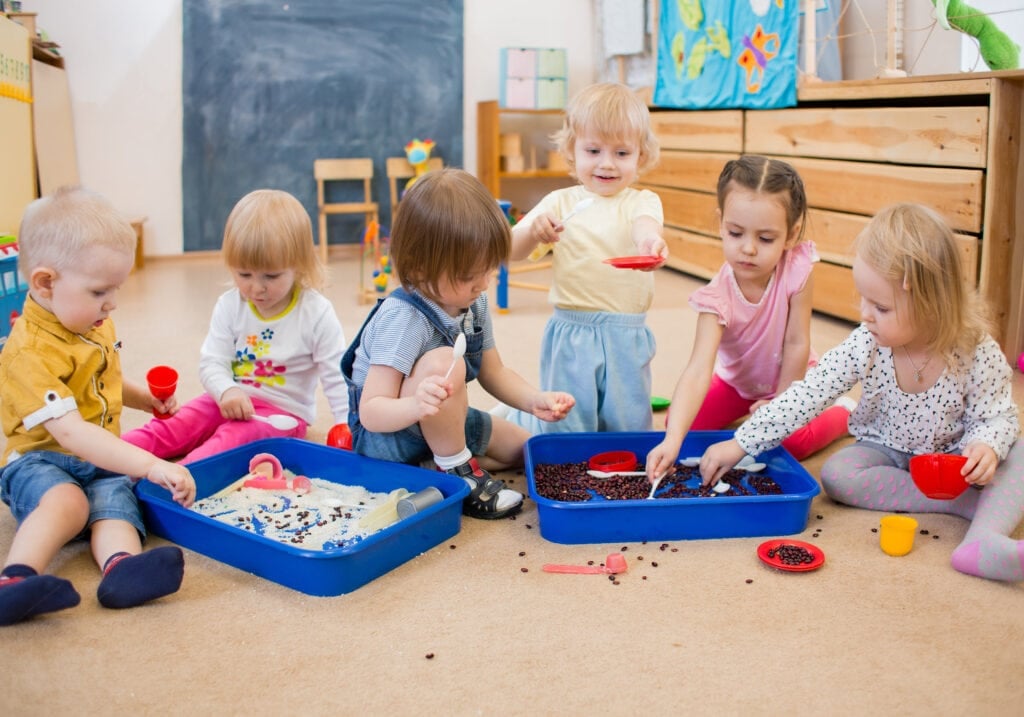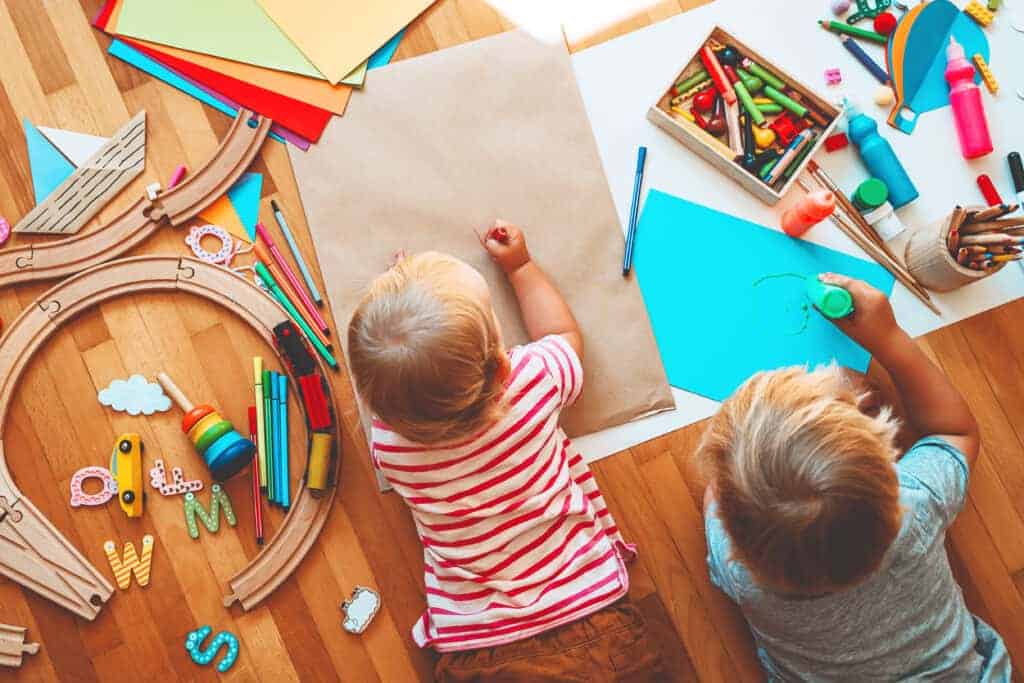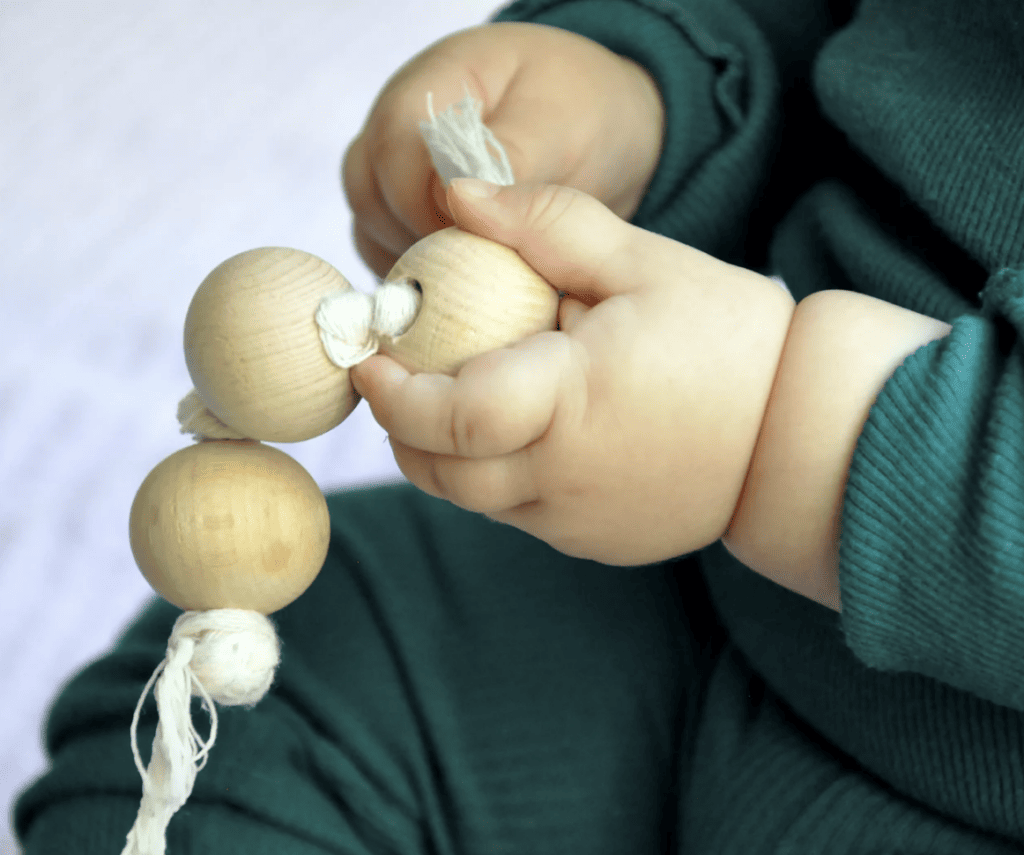
John Dewey was a philosopher whose approach to pedagogy (education methodology) puts him in the constructivist company of Piaget, Vygotsky, and Maria
Both John Dewey and Maria Montessori were pioneers of the learner-centered education movement. Dewey’s theories on education are later expanded and successfully built upon by William Kilpatrick and are still properly put into practice through the
Read on to learn more about John Dewey’s philosophy and how it relates to other child development theories and the
John Dewey
John Dewey was born in Burlington, Vermont in 1859. He grew up in a family that was always very socially active in his community. They were great supporters of the democratic ideal and also active in the political community. Given this, we should not be surprised to find that Dewey became an educator and philosopher. This upbringing informed not only his views on democracy and community, but also problem-solving, and the development of his social and educational philosophies. His educational philosophy can be understood by focusing on three key ideas.
- Progressive Education
- Democratic Principles
- Constructivist Approach
Pragmatism and the Progressive Education Movement
Dewy claimed progressive education is “a product of discontent with traditional education”. The problem Dewey has is that the previous methods of education are fit for adults, and use their standards and impose them on children. But children need far more, developmentally, than basic skills in academics.
He noted that earlier models of education were based on authoritarianism. Students learned by memorization and rote repetition, often of stock phrases, verbatim. Progressive education saw the flaw in this system. If students aren’t invested in what they are learning, they aren’t being educated, they are simply being trained. And it’s not even a particularly effective training method.
Nonetheless, Dewey had many critics who claimed that there was no need to change the draconian education systems that were in place at the time. They said children could never acquire the basic skills and knowledge they need in a system without such rigid restraints. They believed the teacher would lose all authority and respect without them. Educational chaos would result, and eventually, general social unrest would set in.
Dewey was a philosopher in many fields aside from education. He was a Pragmatist, which put simply, is a no-nonsense realist who focuses on real-world solutions to real-world problems. His education philosophy always fits squarely within the framework of his greater cosmology and metaphysical ideas. This is a similarity he shares with Montessori.
Pedagogy is always an extension of cosmology. The method always corresponds to the greater, holistic reality of the situation. So, he believed that a more effective method of education would be to change the school setting entirely. Dewey believed that it should be considered a social institution, not just a “learning factory” or a “training center”.
Effective education comes primarily through social interactions and meaningful activity and communication, not group mantra-chanting, visual force-feeding, and standardized testing. One way to do this is to take into account the interests and experiences of the individual student. This is more effective than treating the students as an “audience” and feeding them a constant monologue.
Another example is the way the school itself functions as a setting. The environment of the school shouldn’t be stacked with rows of pupils facing an authority figure in front of a visual reminder. It should reflect the student’s natural social setting. If people in a particular society sit around in circles when they engage in a group activity, then the school setting should reflect that. We would never line all our chairs up in neat rows and sit in them to perform any activity in a natural setting. The only purpose of that scheme is to control and organize large groups of people, like a military unit, a holiday parade, or an office full of workers. There is no reason to think that is an effective or appropriate environment for children to learn and develop on a daily basis.
Democratic Ideals
The reasoning for this progressivism, of course, is that Dewey, like
This democratic learning has two aspects. On one hand, no democracy can function without an educated voting public. To assume otherwise is to “let the inmates run the asylum”. This is why a free, universal, equal, public education system is a prerequisite for any fair democratic society. So, it is important that we introduce democratic values and ideas and encourage participation in classroom democracy among children as early as possible, not only for their own sake but for the sake of the community and society at large.
But, let’s not forget, Dewey believed that learning was primarily social and that education theory should focus on children, not curriculum and institutions. So, let us look at the other hand. Learning is facilitated by meaningful activity, like participation in classroom democracy. Providing the feeling that you have as much power, respect and equal representation as your peers brings inherent meaning to any activity.
This not only provides the personal investment that keeps a child interested, but it also reinforces their self-esteem and trust in society. Dewey was largely known for his emphasis on democratic principles, as well as experiential learning, social learning, and a basic Constructivist approach to pedagogy. All of these are in accordance with his advocating for self-knowledge, inquiry-based learning, and even self-directed learning (which, of course, is a key practice of the
Constructivists Compared
Dewey is what is known as a constructivist, much like Jean Piaget and Lev Vygotsky. While they may be more well-known for their ideas on education and development, they are no more important or influential. In fact, Dewey’s theories predate them both.
Piaget, while being a pioneer of the psychological aspects of development and education, was relatively unconcerned with the social aspects of constructivism. He was a ‘Psychological Constructivist’, whereas the other theorists we’ve mentioned are ‘social constructivists’.
With Vygotsky, we became familiar with the idea of the ‘more knowledgeable other’ who is often the classroom teacher. Dewey would agree with this but go one step further. He would advocate for a model that gradually releases responsibility from the teacher to the student. This is done by creating learning experiences designed to promote autonomy and self-sufficiency as well as mastering content.
The most effective education will be one in which the information and content in the lessons relate to the student’s prior experiences. This makes the connection with new knowledge more immediate and helps retain it far more effectively than rote memorization or other impersonal methods.
A Contrast to Current Methods
One of the most glaring instances of ghosts of previous methods rattling their chains is the dreaded “Common Core Standards”. This has become an almost exclusive focus of the curriculum in public schools in the United States. This means that the implementation and passing of standardized tests and state exams is the primary focus, on a daily, if not hourly basis. This is clearly problematic.
Dewey disagreed with this kind of curriculum, which is typical of traditional classrooms. He believed that such a limited focus was developmentally adverse, if not destructive to young minds. He went so far as to say that it was unethical teaching behavior to introduce excessive academic content with no attempt to relate any of it to the child’s social life or broader development. Given this, it follows that Dewey would find our rigid implementation of the Common Core Standards not only ineffective but unethical as well.
In an ethical classroom environment, children are viewed as unique individuals. Students find personal meaning by constructing their own path to knowledge. The teacher (or more knowledgeable other) does not direct the activities or spoon-feed facts and knowledge. Students will use a hands-on approach to think critically and solve problems, as well as develop their creativity and emotional stability.
This kind of education focuses not only on the reading, writing, and mathematics skills of a child but intellectual, social, emotional, and spiritual development. In a country as diverse as the U.S., it is also important to teach students to respect different opinions and perspectives. Focusing on English, science, and math at the expense of social sciences, music or art will not accomplish this.
So, with the focus on this kind of minimal, standardized treatment, we can see Dewey’s ideas are not being appreciated or implemented in the most important areas of public education. The status quo method seems to outright ignore his notion that children should be the focus of education, not the content or curriculum.
William Kilpatrick
While Kilpatrick may not be as popular or famous as John Dewey or
Kilpatrick focused on Dewey’s notion that the social development of the child is just as important as their cognitive development. Being well-adjusted and emotionally stable are just as important as mastering any kind of lesson or academics. Of course, academics matter, too, but according to Kilpatrick, it is more important to learn how to think than it is to learn what to think. He was particularly supportive of the idea that the curriculum should focus on real-life situations, not just abstract concepts that are all separated into neat boxes by subject matter. He called his method for implementing these ideas the “Project Method”.
The Project Method
The first thing to note about this method is that it is not meant to be implemented in any orthodox or dogmatic way. It is meant to be taken as a guiding philosophy, not an instruction manual. The Project method blends behavioral psychology with progressivism to give us four steps. It is called behavioral because the steps are guided by observing the student’s behavior. It is called progressive because the focus is on child-centered learning. These are the four steps:
- Purpose
- Plan
- Execute
- Judge
Purpose means that the first step is for the teacher to decide what the purpose of the lesson or curriculum is. Of course, a plan must then be developed to implement the lessons or curriculum. Next, the plan must be implemented. This will be done based on previous observations of student behavior. Finally, the teacher assesses the success or failure NOT OF THE STUDENT, BUT OF THE PLAN.
This is not a static method but assumes that the curriculum is constantly revised based on the needs and interests of the particular student, at a particular stage of development. it should be developed in collaboration between the teacher and the student. This is one of Kilpatrick’s most important ideas: that students should be the leaders of their own development.
Dewey and Montessori
Both John Dewey and Maria
The Montessori curriculum is designed in the spirit of Dewey’s theories, to be appropriate for each child, through careful observation of their students. For this, and other reasons, it is typical for a
The Montessori classroom also encourages things like physical activity and the freedom to choose which activity to engage in. This is also a part of the student-centered approach.
Dewey and
All of the progressive constructivists seem to agree that the interests of educators, administrators, and politicians are often at the center of decisions in traditional schools, and less so the interests of the children attending the school.
The obsession our society has with focusing on Common Core Standards in this country has, frankly, been a disaster for students, teachers, and classrooms generally speaking. When children are trained like animals to perform rudimentary tasks whose only goal is to fulfill expectations that they have no say in, this is a form of educational and developmental neglect.
Dewey was one of the first philosophers to point this out, and give us clear, systematic alternatives that we could implement. The Montessori method implements this kind of method to ensure that students think critically, and become a positive influence on their local communities, and the greater society, as they mature into self-aware adults and responsible citizens.







